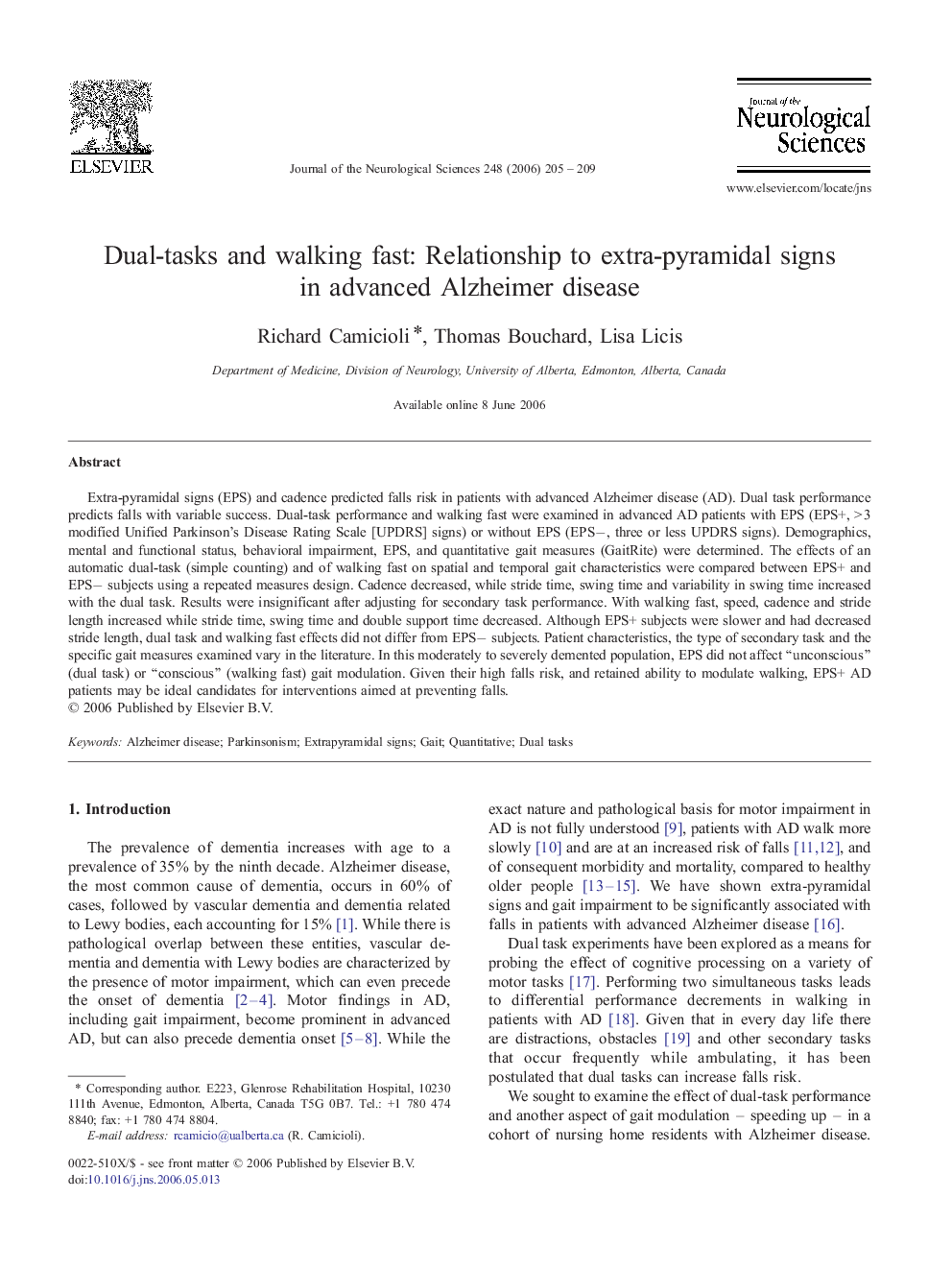| Article ID | Journal | Published Year | Pages | File Type |
|---|---|---|---|---|
| 1916711 | Journal of the Neurological Sciences | 2006 | 5 Pages |
Extra-pyramidal signs (EPS) and cadence predicted falls risk in patients with advanced Alzheimer disease (AD). Dual task performance predicts falls with variable success. Dual-task performance and walking fast were examined in advanced AD patients with EPS (EPS+, > 3 modified Unified Parkinson's Disease Rating Scale [UPDRS] signs) or without EPS (EPS−, three or less UPDRS signs). Demographics, mental and functional status, behavioral impairment, EPS, and quantitative gait measures (GaitRite) were determined. The effects of an automatic dual-task (simple counting) and of walking fast on spatial and temporal gait characteristics were compared between EPS+ and EPS− subjects using a repeated measures design. Cadence decreased, while stride time, swing time and variability in swing time increased with the dual task. Results were insignificant after adjusting for secondary task performance. With walking fast, speed, cadence and stride length increased while stride time, swing time and double support time decreased. Although EPS+ subjects were slower and had decreased stride length, dual task and walking fast effects did not differ from EPS− subjects. Patient characteristics, the type of secondary task and the specific gait measures examined vary in the literature. In this moderately to severely demented population, EPS did not affect “unconscious” (dual task) or “conscious” (walking fast) gait modulation. Given their high falls risk, and retained ability to modulate walking, EPS+ AD patients may be ideal candidates for interventions aimed at preventing falls.
